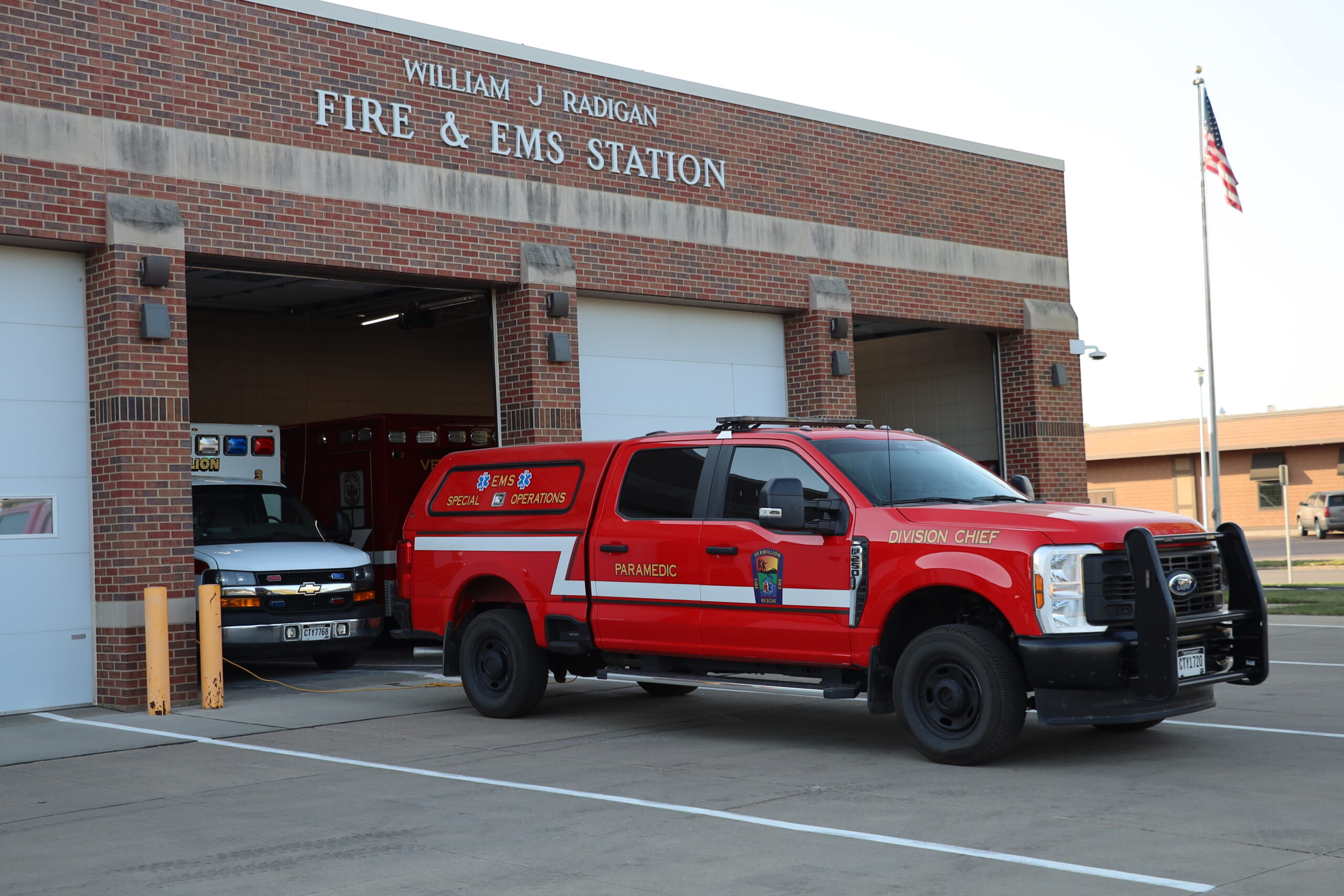
Fire Alarms Plague USD’s Dormitories
By Juliana Oltmanns and Charles Streeter
Since the beginning of the Fall 2024 semester, the Vermillion Fire and EMS Department has visited the North Complex and Coyote Village dorms multiple times for fire alarms.
North Complex (Beede, Mickelson, Richardson and Olson halls) and Coyote Village house most students living on campus.
On Thursday, September 19, the Vermillion Fire and EMS Department was called to Coyote Village due to a cooking fire.
University Police Department Chief Bryant Jackson says the most common cause of such fires are cooking fires.
“Upon their arrival, it was determined a fire extinguisher was used to put out a fire in a toaster oven,” Jackson said. “UPD and the fire department quickly worked to ensure no one was injured and that the fire was completely put out. The fire department proceeded to ventilate the smoke and fire extinguisher haze from the area.”
The Vermillion Fire and EMS Department shared a pithy Facebook post on September 27 with photos of charred food saying, “Dear USD students, Since we’re besties now (I mean, you called us four times in one week), here are some photos for our album. You keep surprising us; who knew mini Cinnabons were extremely flammable?”
According to the photos, one student set off the fire alarms attempting to sear a steak in the common kitchen area.
UPD has alerts in their offices when a fire alarm is set off.
“UPD is the primary first responder agency on the USD campus. UPD responds to any emergency incident on campus. Fire alarms in on campus buildings are reported directly to UPD via the building controls system,” Bryant said.
According to USD Safety Officer Scott Pottorff, the university has set policies in the Community Living Policies that aim to prevent fires. Most recently, electric scooters were banned inside the dorms.
“Electric scooters, in particular, are banned inside campus buildings for several reasons,” Pottorff said. “Firstly, they pose fire hazards, especially when charging, as lithium-ion batteries can overheat or explode. Secondly, scooters can obstruct emergency exits and hallways, hindering evacuation in the event of an emergency. Additionally, they create injury risks by becoming tripping hazards or causing accidents if ridden indoors.”
Pottorff says that the dorms are not necessarily the greatest fire risk on campus.
“Buildings that store flammable chemicals, cylinders, and oxidizers pose a greater risk of severe fires,” Pottorff said.


